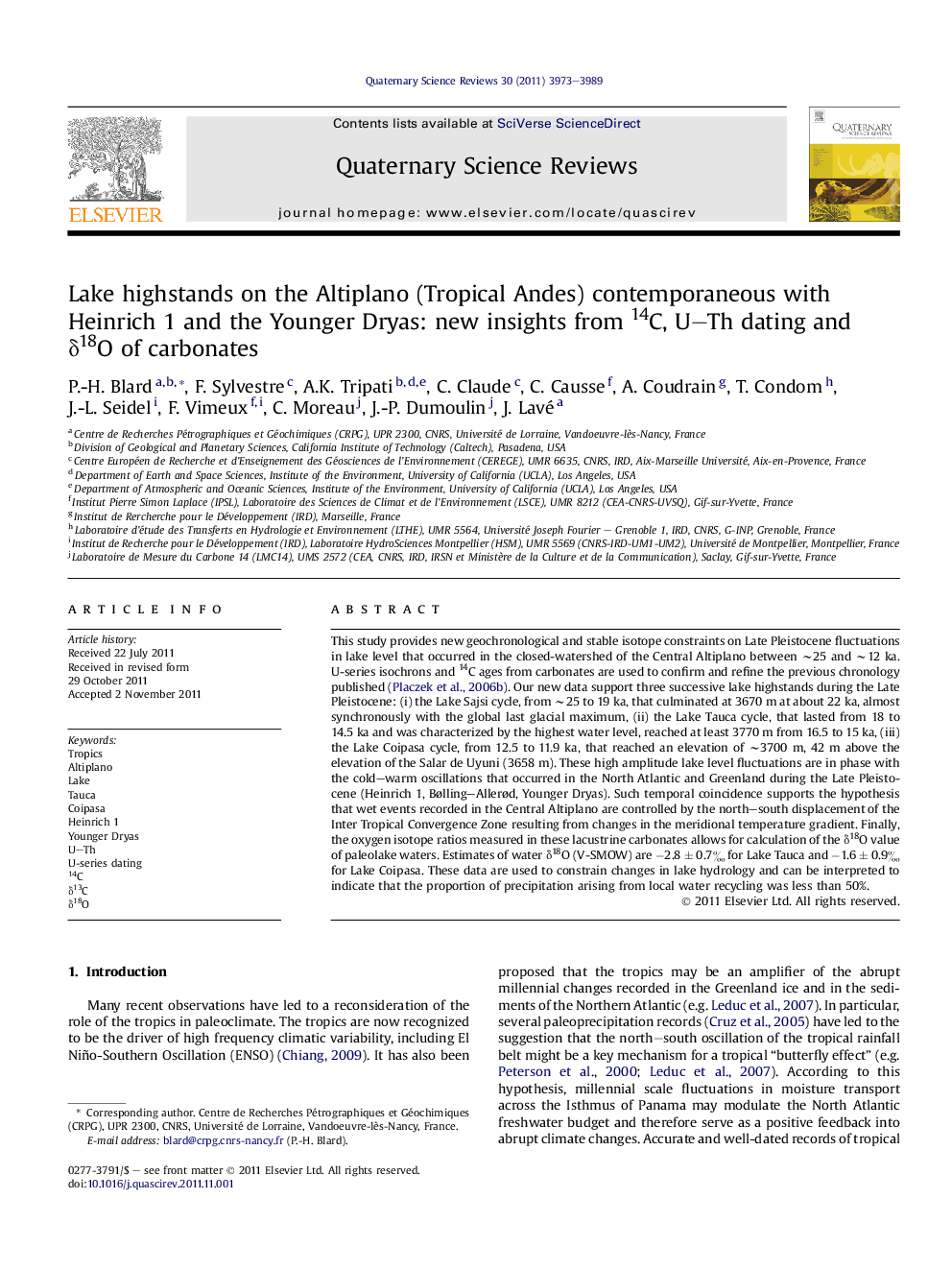| کد مقاله | کد نشریه | سال انتشار | مقاله انگلیسی | نسخه تمام متن |
|---|---|---|---|---|
| 4736578 | 1640904 | 2011 | 17 صفحه PDF | دانلود رایگان |

This study provides new geochronological and stable isotope constraints on Late Pleistocene fluctuations in lake level that occurred in the closed-watershed of the Central Altiplano between ∼25 and ∼12 ka. U-series isochrons and 14C ages from carbonates are used to confirm and refine the previous chronology published (Placzek et al., 2006b). Our new data support three successive lake highstands during the Late Pleistocene: (i) the Lake Sajsi cycle, from ∼25 to 19 ka, that culminated at 3670 m at about 22 ka, almost synchronously with the global last glacial maximum, (ii) the Lake Tauca cycle, that lasted from 18 to 14.5 ka and was characterized by the highest water level, reached at least 3770 m from 16.5 to 15 ka, (iii) the Lake Coipasa cycle, from 12.5 to 11.9 ka, that reached an elevation of ∼3700 m, 42 m above the elevation of the Salar de Uyuni (3658 m). These high amplitude lake level fluctuations are in phase with the cold–warm oscillations that occurred in the North Atlantic and Greenland during the Late Pleistocene (Heinrich 1, Bølling–Allerød, Younger Dryas). Such temporal coincidence supports the hypothesis that wet events recorded in the Central Altiplano are controlled by the north–south displacement of the Inter Tropical Convergence Zone resulting from changes in the meridional temperature gradient. Finally, the oxygen isotope ratios measured in these lacustrine carbonates allows for calculation of the δ18O value of paleolake waters. Estimates of water δ18O (V-SMOW) are −2.8 ± 0.7‰ for Lake Tauca and −1.6 ± 0.9‰ for Lake Coipasa. These data are used to constrain changes in lake hydrology and can be interpreted to indicate that the proportion of precipitation arising from local water recycling was less than 50%.
► New U–Th (n = 6) and 14C dates (n = 10) of Altiplano lacustrine deposits.
► Data indicate 3 lake highstands episodes: 24–19 ka, 18–14.5 ka and 12.5–11.9 ka.
► Two highest highstands synchronous with Heinrich 1 and Younger Dryas.
► δ18O of lake paleowater indicates limited local recycling of precipitation (<50%).
Journal: Quaternary Science Reviews - Volume 30, Issues 27–28, December 2011, Pages 3973–3989